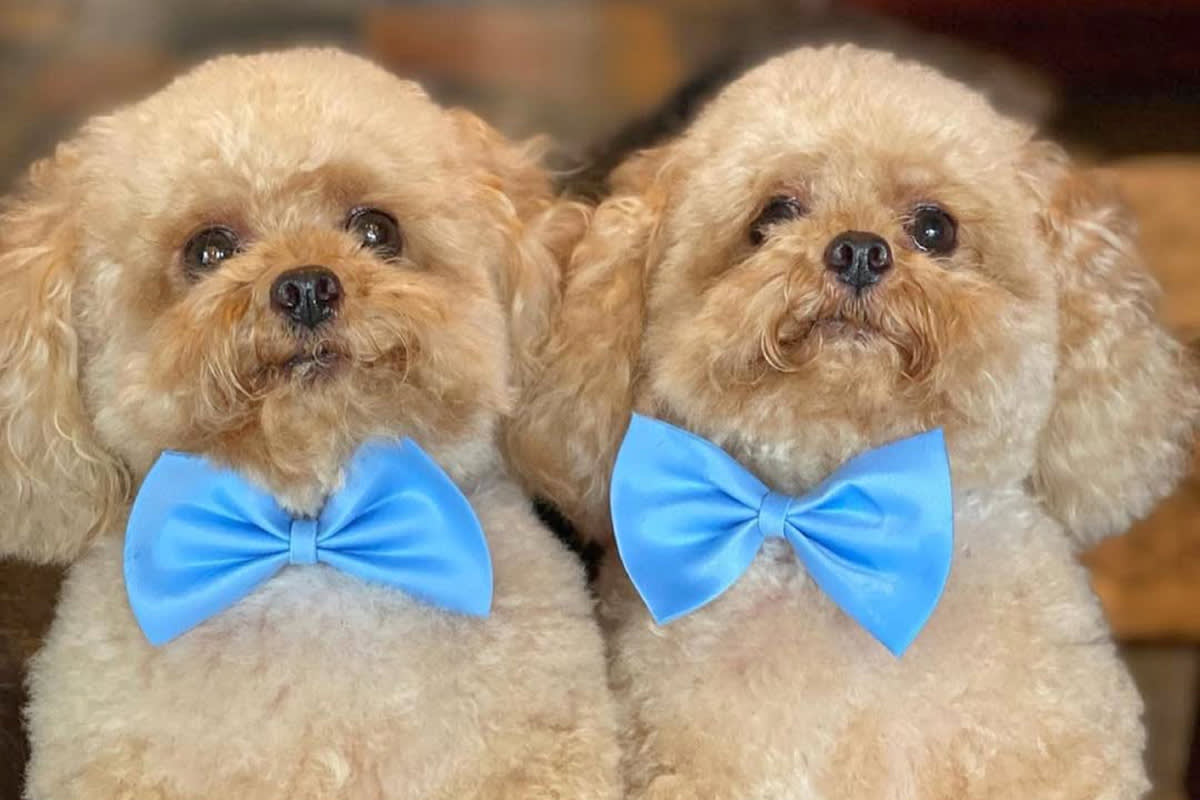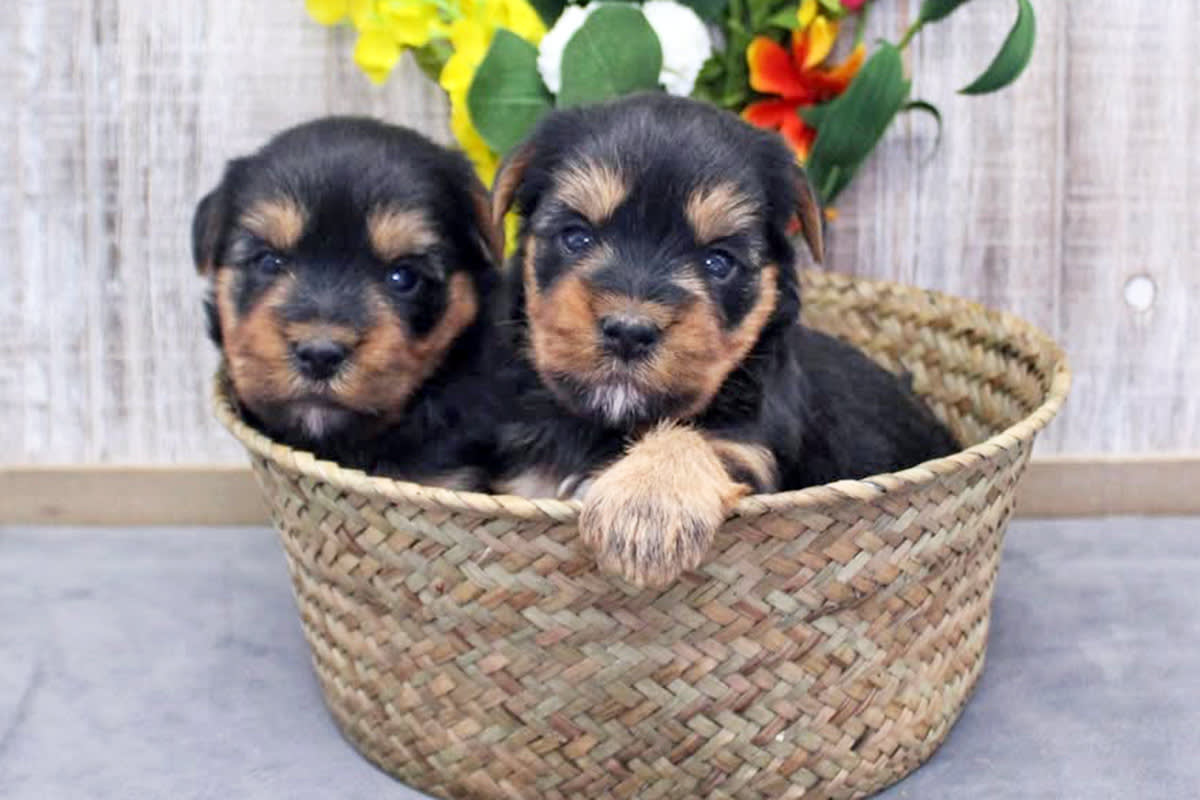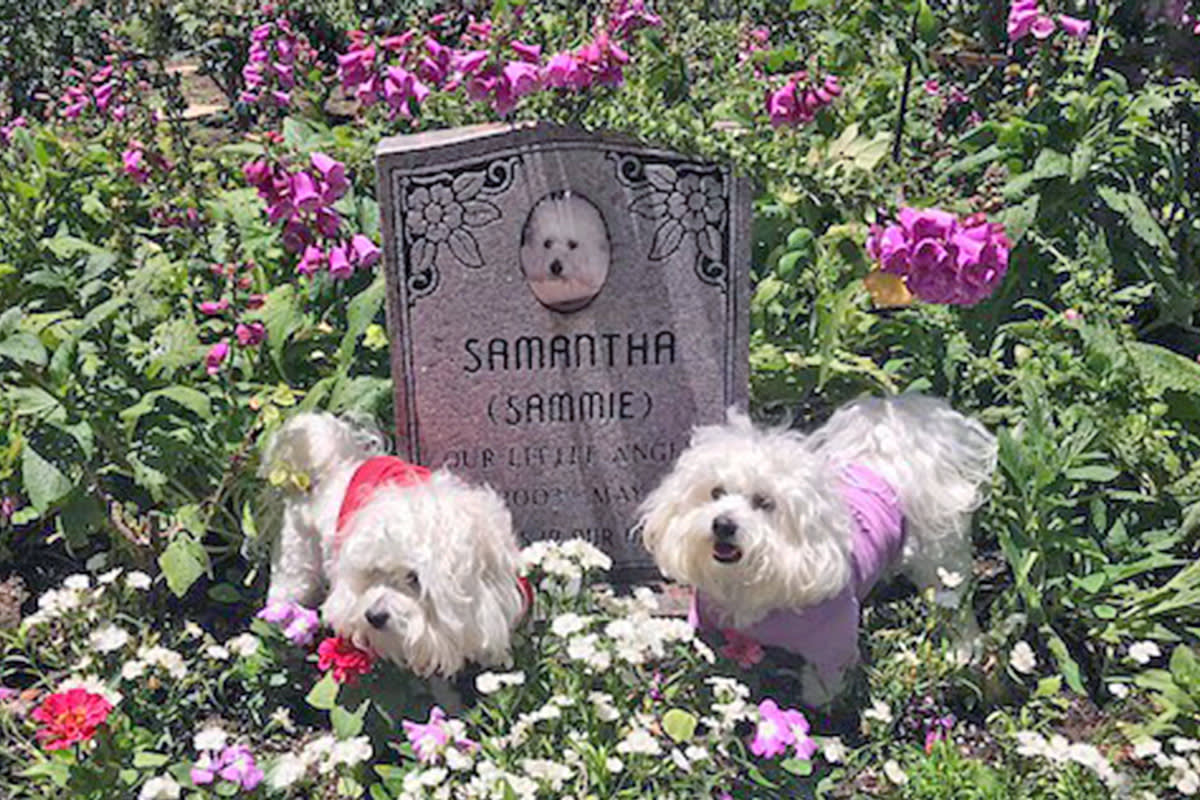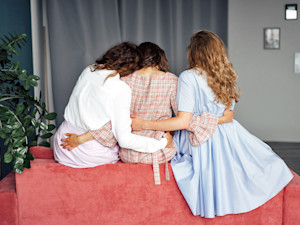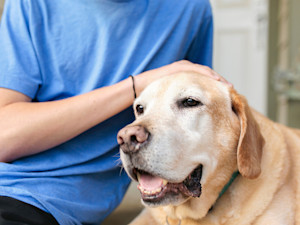Tom Brady Reveals His Dog Junie Is the Clone of His Departed Pit Bull
Seventy-four percent of Gen Z pet parents say they’d do the same.
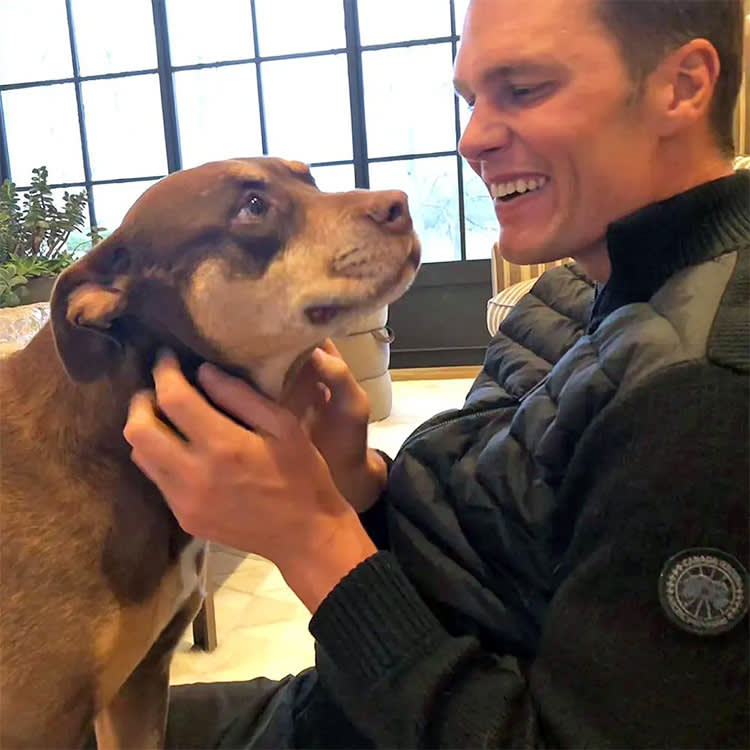
Share Article
In December 2023, Tom Brady’s beloved family dog, Lua, passed away. The former NFL quarterback and his ex-wife, supermodel Gisele Bündchen, both posted heartbreaking tributesopens in new tab to the adored pup, referring to her as their “guardian angel.” Soon after, the pair welcomed home a similar looking Pit Bull mix puppy named Junie. But the resemblance wasn’t coincidental — this week, Brady revealed that Junie is actually a clone of the departed Lua.
The family turned to Colossal Biosciences, a biotech company that Brady is an investor in, to do the job. In addition to cloning dogs and cats, Colossal is committed to “de-extinction” efforts, including bringing back the dire wolf and dodo bird. “I love my animals. They mean the world to me and my family,” Brady said in a statement.opens in new tab “A few years ago, I worked with Colossal and leveraged their non-invasive cloning technology through a simple blood draw of our family's elderly dog before she passed.”
The revelation coincides with more news from Colossal: They have acquired Viagen Pets and Equine, a biotech company that specializes in pet cloning. Viagen is most famous for cloning the pets of celebrities, including Barbra Streisand and Paris Hilton. “I am excited how Colossal and Viagen’s tech together can help both families losing their beloved pets while helping to save endangered species,” Brady said.
Pet cloning isn’t just for celebrities
Pet cloning has become increasingly popular among a certain set of ultra-devoted pet parents. It’s not just for celebrities — lawyers in Californiaopens in new tab have done it, and so has a mineral prospector in Canadaopens in new tab.

Kelly Anderson, one such pet parent, never planned to clone her cat. In fact, she didn’t even know that cat cloning was a thing until about three weeks before her beloved kitty, Chai, passed away. But when it happened, she remembered a conversation she’d shared with her roommate, a vet tech, before Chai had suddenly gotten sick.
“It was just one of those conversations like, ‘Oh, wow, that’s crazy — I didn’t know that you could clone animals,’” Anderson recalls. She’d thought nothing of it at first, but it came back to her while she grieved Chai.
Right after Chai’s death, Anderson rushed to do research, contacted Viagen, and began the process of harvesting and storing Chai’s DNA. It was an in-the-moment decision, she says, and ultimately, she paid $25,000 to create her cat’s genetic twin, Belle, whom she’s had for four years.
Anderson says she took out a loan to clone Chai, and evidently, she’s not alone in her dedication. A recent surveyopens in new tab of 1,900 American dog parents and 100 American veterinary doctors found that half of the pet parents surveyed would clone their dog if it was possible, and 10 percent said there’s “no limit” to what they’d pay. Gen Z seems particularly keen, as a whopping 74 percent said they’d shell out to clone their dogs.
ViaGen business manager Lauren Aston says that the company has a waiting list for all three of the animals it clones: cats, dogs, and horses. The price of cloning a dog or cat has risen since Anderson decided to take the leap. ViaGen now charges $50,000 for each, and a cloned horse will cost you $80,000.
To Anderson, an animal lover who trains dogs and has fostered neonatal kittens for 15 years with organizations like Austin Pets Alive!opens in new tab, the five-figure investment was absolutely worth it. Her family was not surprised to hear about her decision, either. “If anyone is going to do something like this,” she recalls them saying, “it’s going to be you.”
Still, there are plenty of people who raise eyebrows about this whole process. The post-COVID crisis has flooded animal shelters with discarded pets, leading to even designer dogs ending up available for adoption. Here, we delve into how the process works — and why animal advocates and adoption advocates are not happy about it.
So, how does pet cloning even work?
The cloning process is relatively straightforward. As Aston explains, you first need a cell culture to capture the animal’s DNA. ViaGen collects a small skin sample through a noninvasive procedure that Aston compares to mole removal.
“We’ve got thousands and thousands of clients that just do that,” Aston says. “Just store the DNA for whatever their reason is.”
For some pet parents, Aston says, storing DNA gives peace of mind and allows a pet to live on, in some form, forever. Some keep the DNA in hopes that cloning could one day become less expensive. ViaGen charges $1,600 up front plus another $150 per year for storage.
To produce a clone from the DNA sample, scientists extract all DNA from a donor egg and implant a single cell from the animal they’re cloning. No sperm is needed; the egg begins to grow, dividing and multiplying into an embryo that ViaGen transfers into a surrogate mother. From there, Aston says, everything unfolds like a normal pregnancy, right down to the delivery.
Although the science has existed for decades, cloning is still a relatively new field. Dolly the Sheepopens in new tab, widely considered the first cloned mammal, made her debut in 1996.
The world’s first cloned pet, the cheekily named CC (short for Copy Cat), took center stage in 2001, and it wasn’t until 2005 that Sooam Biotechopens in new tab produced the first cloned dog, Snuppyopens in new tab. Although pet cloning is more mainstream now than it was a decade ago, the industry is still pretty boutique; only a handful of companies around the world provide the service.
There’s obvious controversy here
As with any newer innovation, cloning has its supporters and detractors. In this case, the bulk of the opposition comes from animal-rights groups speaking out about how these practices can affect the animals involved, as well as others.
In 2018, as discussion of Streisand cloning her dog Samantha went viral, Ingrid Newkirk — president of the animal-rights group People for the Ethical Treatment of Animals (PETA) — put out a statement opens in new tab condemning the practice. “We all want our beloved dogs to live forever, but while it may sound like a good idea, cloning doesn’t achieve that,” Newkirk said at the time. “Instead, it creates a new and different dog who has only the physical characteristics of the original.”
Newkirk further claimed that cloning “has a high failure rate” and added that “when you consider that millions of wonderful adoptable dogs are languishing in animal shelters every year or dying in terrifying ways when abandoned, you realize that cloning adds to the homeless-animal population crisis.”
PETA isn’t the only animal-rights group to cry foul on cloning. Lindsay Marshall, director of Science for Humane World for Animalsopens in new tab, also has concerns. At the heart of Marshall’s opposition is the idea that cloning frames animals as “commodities rather than individuals.” And from a scientific perspective, she worries about the lab animals involved in the cloning process.
“For every one animal that’s successfully cloned,” Marshall says, “there are hundreds beneath that who’ve been kind of co-opted into the creation of that clone but don’t benefit from that at all. There’s no benefit from those animals that are kept in the laboratories.”
The animals living in labs are just like our pets at home, Marshall says. “Whenever you see the pictures that Humane World for Animals has of those animals in those conditions, that is exactly the same as your dog at home being put in a cage and separated from his friends and not given a bed and not given any toys … They’re just as distressed as you’d imagine your dog would be.” As for cats, she added, “I’ve never even had a cat, but … from talking to friends who have got cats, I would imagine that we’re going to have exactly the same ethical and welfare issues.”
Marshall also expressed specific concerns about the practices involved in dog cloning. For one thing, she says, it’s difficult to know when a female dog is coming into estrus — the period during which she can become pregnant.
As Marshall explains, doggie IVF requires removing a “donor” dog’s oocytes (meaning immature egg cells). Before researchers can anesthetize the dog and harvest her oocytes, Marshall says, they have to make sure it’s the right time in her cycle. “We’re talking about having your blood taken every single day.” All in all, Marshall says, the harvesting process can be “traumatic.” And then, there are the surrogate mothers, who become pregnant without knowing how, and who might be forced to process the loss of a pregnancy. “I don’t think we really fully understand what that does to the dogs,” Marshall says.
Like Newkirk, Marshall also expresses concerns about the limited efficiency she’s seen in the available academic research about dog cloning. She cited one studyopens in new tab conducted in 2023, in which 419 oocytes were collected from 38 female dogs, producing four puppies — only three of which survived. “Honestly,” Marshall says, “... even if [the success rate] was 100 percent I don't think it’s worth it.”
The American Society for the Prevention of Cruelty to Animals (ASPCA) has expressed its own reservations. In a statement posted on its website, the group has called for a moratoriumopens in new tab on the research, promotion, and sale of cloned pets. In arguing for the halt, the ASPCA claimed that past reports had “indicated a variety of anatomical and physiological problems” associated with animals produced via cloning.
Because a lot of companion-animal cloning research and activity occurs within private companies, the ASPCA argues, it’s hard to fully document the consequences. During the proposed hiatus, the ASPCA suggests, a multidisciplinary commission could evaluate the industry and create a detailed report that would serve as a foundation for new guidelines and regulations.
In a statement to Kinship, Christa Chadwick, vice president of shelter services for the ASPCA, emphasizes that thousands of dogs are stuck waiting for homes in shelters across the country. “These dogs have so much love to give, but are often overlooked due to their age, size, or breed; however, it’s important to remember that each dog is an individual, and shelter staff are experts at finding the right dog to match the characteristics or traits your family is seeking,” Chadwick says.
What does ViaGen have to say about this?
When asked about Newkirk’s claims, Aston says that ViaGen supports animal adoption and notes that many of the animals whose DNA they store were adopted from shelters. Because many adopted animals are mixed breed, she says, many pet parents cannot easily find another animal that looks like them or shares their genetic traits. (Kinship reached out to ViaGen to respond to Marshall and Chadwick’s additional claims but did not receive a response.)
“We are not like puppy mills, pumping out animals without a home in mind,” Aston says. Instead, she adds, every animal that ViaGen clones has been specifically requested, and the company’s contract ensures that clients assume responsibility for all animals born in a litter — usually one or two.
Aston also denies the allegedly high failure rate and said that while that might have been accurate 25 years ago, it’s no longer the case. “We’ve learned so much more about the reproductive systems of these animals over the past 20 something years,” she says, and so “the technology has improved.”
Finally, Aston adds that ViaGen is overseen by the USDA and has never failed an inspection. Publicly available USDA records indicate that the company has been inspected twice (once in 2017 and once in 2018) and faced zero compliance issues. According to Aston, a third-party veterinarian performs a health inspection for each animal the company produces.
Pet parents have their own perspective
Anderson’s cat, Chai, died in March of 2017. In October of 2021, Anderson welcomed Chai’s clone, Belle — who, as of publication time, has 88,000 followers on Instagramopens in new tab and 141,700 on TikTokopens in new tab. As with all social media stars, Belle’s engagement comes from a steady stream of both fans and detractors.
For some, Belle’s channels are educational. According to Anderson, multiple students have reached out to tell her they’re writing school essays about her TikTok account, or that she’s taught them about cloning. But while those who had been following Chai’s journey on Instagram were largely supportive, Anderson says she’s faced her fair share of “keyboard warriors.”
“I get a lot of people who are [believers in] ‘adopt, don’t shop’ and think that I should have adopted instead of cloning, or that I should have donated all of my money instead of cloning,” Anderson says. She adds, though, that because she took out a loan, “this is not money that I could have thrown around at anything.”
When asked how she would describe getting to know a clone of her beloved cat, Anderson chose the exact word you’d expect: surreal. As one might expect, Anderson was at first preoccupied with seeing how Belle compared to Chai. Over time, however, she got to know her for who she was. (In a New York Times featureopens in new tab, Streisand was adamant that while her dogs were clones, they were nothing like her late pup, Samantha: “You can clone the look of a dog, but you can’t clone the soul. Still, every time I look at their faces, I think of my Samantha... and smile.”)
“I knew they’d be pretty different, because Chai was very sick as a kitten when I got her,” Anderson says. “Not from anything genetic that would be passed on, but just viral and bacterial illnesses. She was isolated and quarantined as a kitten and was very standoffish to most people because of it.”
Belle, who got to visit a pumpkin patch with Anderson on the first day she came home, had a much more idyllic start to life. As Anderson puts it, “She was born into the world curious and outgoing and very different from Chai.” Still, Anderson notes, there are some similarities between the two cats. Sometimes, Belle will cuddle against her back in the same “weird way” Chai once did. She’s also supported Anderson through tough emotional times, much like Chai.
“I used to struggle with depression, and Chai was always there to console me in my darkest moments,” Anderson says. More recently, she’s been doing well with the help of new medication. But over the past month or so, she’s been having an emotional time, and Belle steps up to console her.
“I was crying one night, and she came up and cuddled with me, and she’s just not a cuddly cat by nature,” Anderson says. “Cuddling is a rare good thing from her, and Chai wasn’t cuddly by nature either. So, that really means something to me.”
More than anything, Anderson believes that people who choose to clone do so because they are so closely bonded to their pets. Often, she points out, many people who do this choose to do so because of loss. Ultimately, she says, “I just think that it comes from a place of love.” At the end of the day, she figures, “I just have to accept that it's a controversial topic, and if I want to talk about it online, I have to be thick-skinned.”
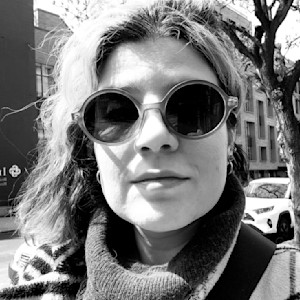
Laura Bradley
Laura is a New York-based experienced writer and mom of two rescue pups. Her work has appeared in Slate, Vanity Fair, Daily Beast, The Washington Post, The Atlantic, Yahoo! News, Vulture, Grazia Magazine, and more. When she is not writing or walking the pooches, you will probably find her in the community garden.
Related articles
![Three woman hold and support each other.]()
Support Groups for Grieving Pet Parents Are on the Rise
The best medicine when you’re experiencing loss? Finding others who get it.
![Man petting his senior Lab dog on the porch.]()
Anticipatory Grief for an Aging—or Even Young—Pet Is a Very Real Thing
Are you already feeling sad about losing your pet even though they're still alive?
![two dogs by a grave in a pet cemetery]()
5 of the Most Beautiful Places in the US to Lay Your Pet to Rest
These pet cemeteries are giving animals the memorials they deserve.
![a person holding a dog collar]()
Is Pet Bereavement Leave in Our Future?
More companies are considering how they can support grieving pet parents.
